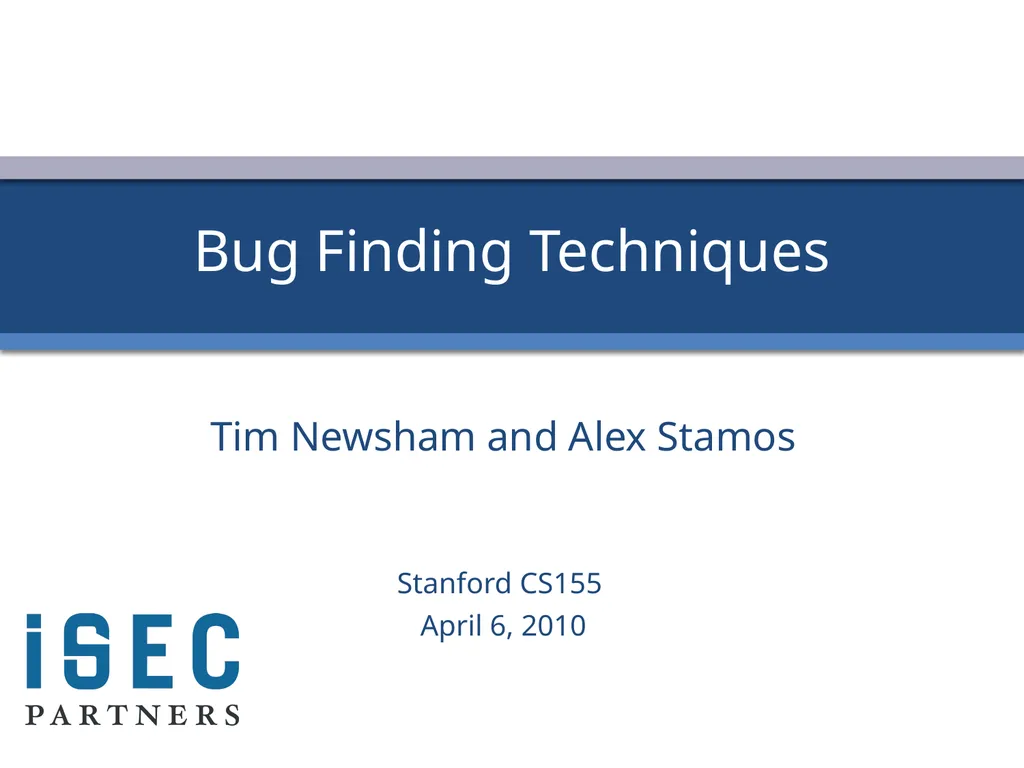
Author : debby-jeon | Published Date : 2025-08-16
Description: Tim Newsham and Alex Stamos Stanford CS155 April 6, 2010 Bug Finding Techniques Your Humble Narrators Tim Newsham Security Researcher ISS, SNI, NAI, Guardent, stake, iSEC U of Hawaii BSEE, U of Arizona MSCS Alex Stamos Co-Founder andDownload Presentation The PPT/PDF document "" is the property of its rightful owner. Permission is granted to download and print the materials on this website for personal, non-commercial use only, and to display it on your personal computer provided you do not modify the materials and that you retain all copyright notices contained in the materials. By downloading content from our website, you accept the terms of this agreement.
Here is the link to download the presentation.
"Tim Newsham and Alex Stamos Stanford CS155 April"The content belongs to its owner. You may download and print it for personal use, without modification, and keep all copyright notices. By downloading, you agree to these terms.





![http://cs273a.stanford.edu [BejeranoFall13/14]](https://thumbs.docslides.com/536015/http-cs273a-stanford-edu-bejeranofall13-14-.jpg)
![http://cs273a.stanford.edu [BejeranoFall14/15]](https://thumbs.docslides.com/538561/http-cs273a-stanford-edu-bejeranofall14-15.jpg)
![http://cs273a.stanford.edu [Bejerano Fall16/17]](https://thumbs.docslides.com/540020/http-cs273a-stanford-edu-bejerano-fall16-17.jpg)



